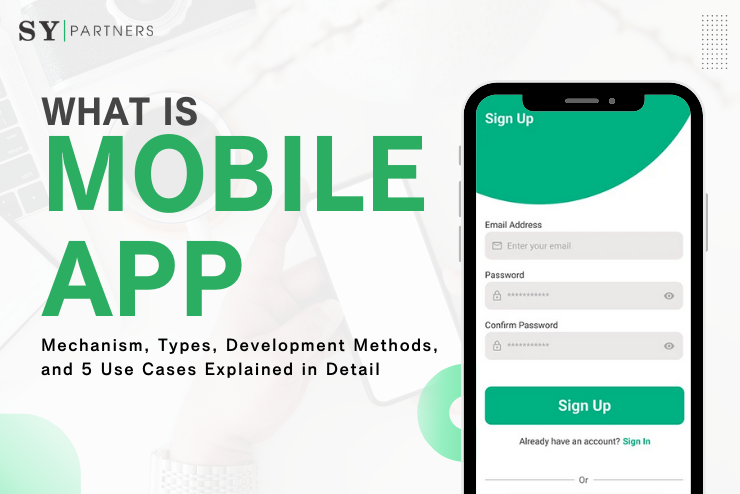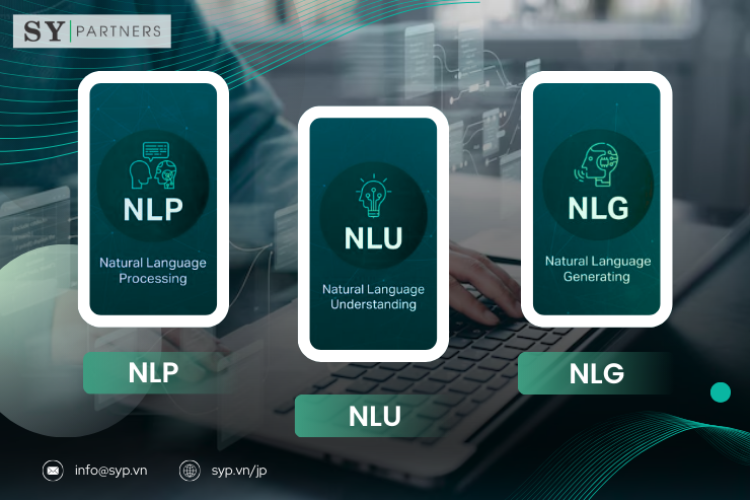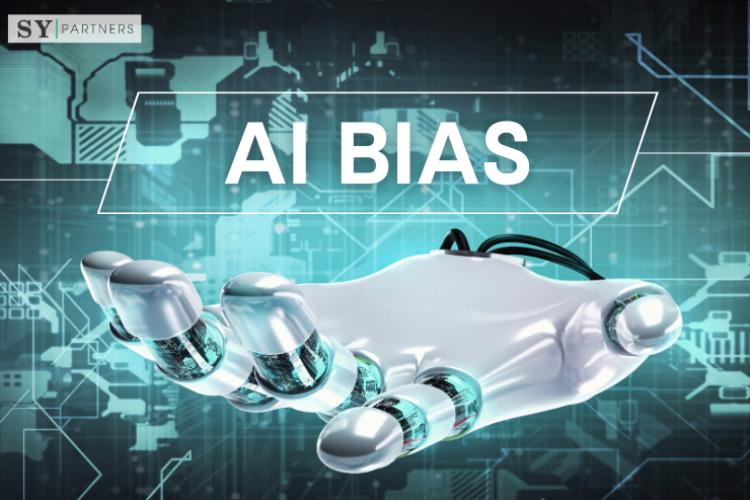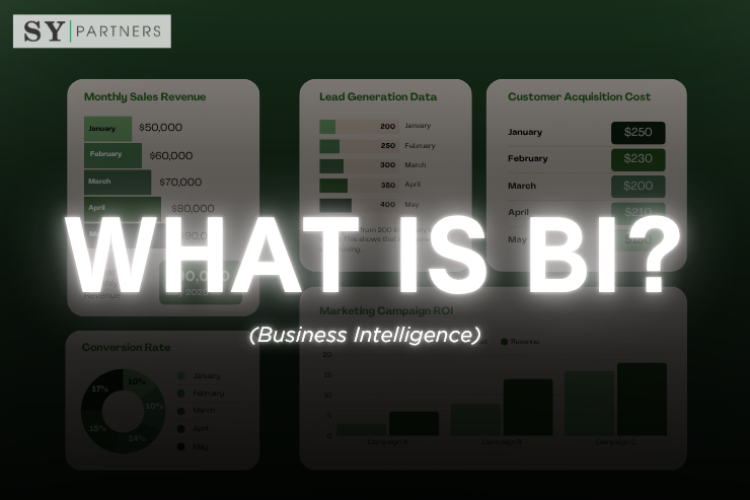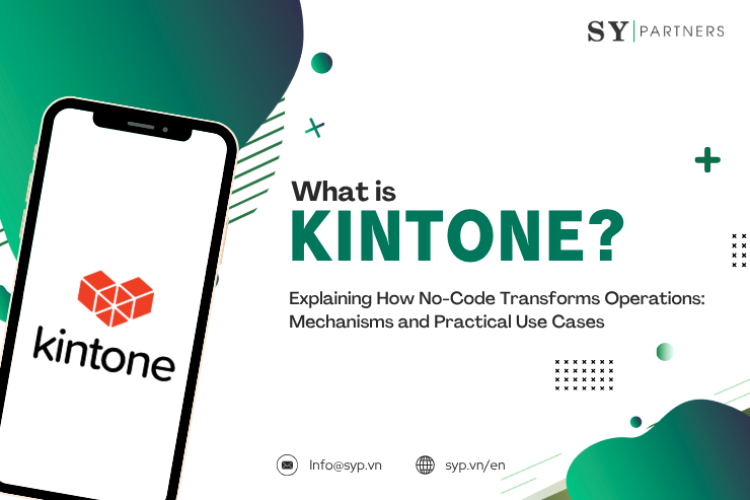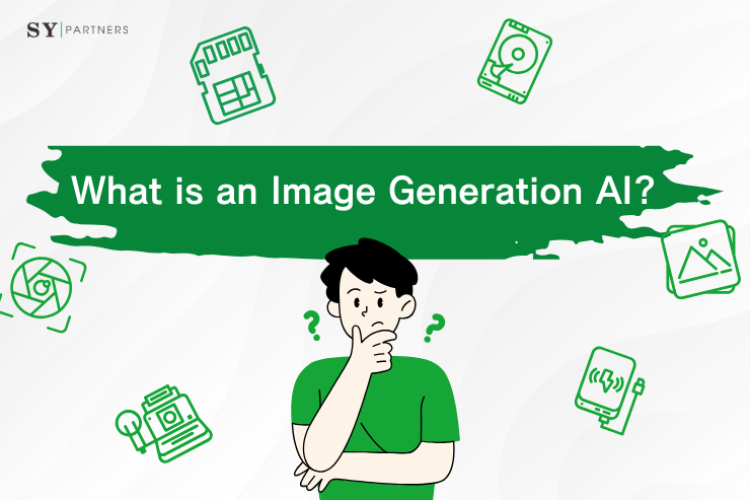What Is a Mobile App? Mechanism, Types, Development Methods, and 5 Use Cases Explained in Detail
With the spread of smartphones, mobile apps have become indispensable in everyday life, covering shopping, social networking, learning, health management, and more. For companies, apps are also a strategic tool to strengthen connections with customers and enhance competitiveness.
This article explains the basics of mobile apps, their types, mechanisms, and development processes in a way that beginners can understand. In addition, it introduces the use of AI for personalization and data analysis, the latest trends, and solutions to challenges, providing hints for app development and business utilization.
1. What Is a Mobile App?
A mobile app is a dedicated application that runs on mobile devices such as smartphones and tablets. It provides a wide variety of functions according to user needs, such as e-commerce, social networking, games, and business support, playing a role closely tied to daily life and business.
Since screen size and usability vary depending on the device, app design requires ingenuity. For smartphones, one-handed usability is emphasized, while for tablets, it is important to optimize the display of information and operability using the larger screen.
Differences in Usage Between Apps and Mobile Sites
On smartphones, there are clear differences between how apps and mobile websites are used. In areas such as “games,” “health and wellness management,” and “communication,” apps are strongly preferred. These areas emphasize functionality such as smooth operation, push notifications, and offline usability, making apps the most comfortable option for users.
On the other hand, in use cases such as “restaurant information at travel destinations,” “search,” and “online shopping,” mobile sites are often more commonly used. For example, tasks like “searching” or “getting restaurant information while traveling” are often conducted through mobile sites. The reasons include the convenience of instant access and the elimination of the need to download an app.
In summary, apps tend to be more suitable for continuous and close engagement, while mobile sites are better suited for temporary, instant information retrieval. Data shows that users are choosing channels appropriately depending on their goals.
Relationship Between Applications and Platforms (App and OS Dependency)
Mobile apps are fundamentally dependent on the platform (OS) they run on. The major mobile operating systems are iOS and Android, each with its own ecosystem, programming languages, and development tools.
Basic Differences Between iOS and Android
When developing smartphone apps, the development approach and technology stack differ greatly depending on the target platform. The main differences between iOS and Android can be compared from the perspective of provider, ecosystem, development tools, and more.
| Item | iOS | Android |
|---|---|---|
| Provider | Apple | |
| Ecosystem | Closed (limited to Apple products) | Open (adopted by many device manufacturers) |
| Main Programming Language | Swift (previously Objective-C) | Kotlin (previously Java) |
| Development Tools | Xcode + iOS SDK | Android Studio + Android SDK |
| Distribution Method | App Store (review by Apple required) | Google Play (looser review process) |
| Hardware Control | Apple devices only (unified environment) | Varies by manufacturer (diverse environments) |
iOS is strong in providing unified quality and security, while Android is advantageous for addressing diverse markets.
Key Components in Development
Regardless of OS, there are common components used in app development. Understanding their roles enables more flexible development.
| Component | Description | Example |
|---|---|---|
| SDK | Development kits provided for each OS. Allow access to device functions such as camera, GPS, and accelerometer. | iOS SDK, Android SDK |
| API | Mechanisms that link apps with external services. Essential for functions such as authentication, payments, maps, and social networking. | Google Maps API, Stripe API |
| Framework | Development environments that enable cross-platform development. Allow one codebase to be used for multiple OS apps. | Flutter, React Native, Xamarin |
By effectively utilizing these components, developers can enhance the functionality and scalability of apps.
Advantages and Challenges of Cross-Platform Development
Cross-platform development, which allows one codebase to support multiple operating systems, is particularly effective for startups and short-term projects. However, it is not a perfect solution and does come with some technical limitations.
| Item | Description |
|---|---|
| Advantage | High code reusability, enabling reduced development effort and costs. |
| Main Use Cases | MVPs (Minimum Viable Products), startup apps, internal tools. |
| Challenges | Compared to native development, it is more difficult to optimize speed and design. |
Cross-platform is excellent for efficiency, but when aiming for high-quality UI/UX, it is important to use it selectively alongside native development.
Choosing the Right Platform
Since iOS and Android have very different design philosophies and ecosystems, it is important to choose the appropriate platform based on the purpose of the app and its target user base.
By leveraging cross-platform technology, developers can improve efficiency and reach a wide user base. However, when a native experience is essential, development methods optimized for each OS should be selected.
2. Main Types of Mobile Apps
Mobile apps can be classified into Native Apps, Hybrid Apps, Cross-Platform Apps, and PWAs based on development methods and technological foundations. Below, each type’s characteristics, advantages, and challenges are explained in detail.
2.1 Native App
Native apps are the best choice when the highest usability and performance are required. Optimized for each OS, the user experience is extremely smooth, and device functions can be fully utilized.
| Content | Description |
|---|---|
| Overview | Apps optimized for a specific OS (iOS or Android). Developed using Swift or Kotlin. |
| Features | - Full utilization of device functions (camera, GPS, etc.) - Smooth UI/UX experience |
| Use Cases | - High-graphics apps such as 3D games - Security-focused financial apps |
| Technical Strengths | - Fast performance - High performance unique to native apps |
| Recommended Points | Best for apps where quality and usability are prioritized. Further refinement possible with AI-driven UI testing. Highest standards in usability, appearance, and responsiveness. Strongly recommended for projects with sufficient budget and time. |
2.2 Hybrid App
Hybrid apps are attractive because they use web technologies while being distributable via app stores. They are suitable for small to medium-sized projects or early-stage validation.
| Content | Description |
|---|---|
| Overview | Apps using web technologies such as HTML/CSS/JavaScript and running via WebView. |
| Features | - Bridge between web and app - Utilizes frameworks like Ionic or Cordova |
| Use Cases | - E-commerce apps or information-providing apps for small to medium projects |
| Technical Strengths | - One codebase can support multiple OSs - Relatively low-cost development |
| Recommended Points | Ideal for companies that want to deliver apps while keeping development costs low. AI can also reduce WebView delays. Suitable for businesses prioritizing speed and cost, though expecting native-level usability is difficult. |
2.3 Cross-Platform App
Cross-platform apps are ideal when you want a balance between development efficiency and quality. With the advent of Flutter and React Native, UI/UX has also improved significantly.
| Content | Description |
|---|---|
| Overview | Apps that support iOS and Android with a single codebase. Flutter and React Native are representative. |
| Features | - High code sharing rate (around 80–90%) - UI/UX experience close to native |
| Use Cases | - Widely applicable, such as social networking apps and business support apps |
| Technical Strengths | - Excellent development efficiency and maintainability - Lightweight and fast |
| Recommended Points | Best for companies that want to quickly develop apps supporting multiple OSs. Further efficiency is possible with AI-assisted code generation. Optimal for one team managing multiple platforms while controlling costs and maintaining reasonable quality. |
2.4 Progressive Web App (PWA)
PWAs are innovative web apps that provide an app-like experience without installation. They are a strong option when rapid deployment and wide accessibility are required.
| Content | Description |
|---|---|
| Overview | Web apps using browser technologies (such as Service Workers) to provide an app-like experience. |
| Features | - No installation required - Offline support and push notifications possible |
| Use Cases | - News sites or simple e-commerce sites, where immediacy and accessibility are important |
| Technical Strengths | - SEO benefits - Cross-platform support - Low cost |
| Recommended Points | Best for rapid deployment to a broad user base. AI can be used for user behavior analysis and improvement. Minimal cost and fastest approach to app-like experiences. Recommended for services not requiring deep feature integration. |
3. Mobile App Development Process
Mobile app development is not just about writing code. It requires a consistent process from market analysis to design, implementation, release, and operation. Proceeding carefully at each step ensures the creation of a usable and valuable app.
3.1 Requirements Definition & Market Analysis
First, clarify the app’s “purpose” and “target users.”
- Define user personas: age, behavior, pain points
- Identify challenges: specify problems for users and business
- Conduct competitor research: find points to differentiate from other apps
- Organize necessary features: focus on MVP design that is minimal but practical
If this stage is vague, later stages will require many reworks.
3.2 UX Design & UI Planning
Design UX (User Experience) and UI (User Interface) so that users can use the app comfortably and without confusion.
- Design screen transitions and user flows: logically organize app usage
- Create wireframes: plan the structure on paper
- Prototype using design tools: create prototypes with tools like Figma
- Gather early user feedback: identify improvements early
A good UX ensures that users will want to “use the app again.”
3.3 Selecting Technical Stack & Development Environment
Choosing technology according to purpose and budget directly affects smooth development and operation.
- Target iOS, Android, or both?
- Cross-platform like Flutter or React Native, or native?
- Backend choices? (Firebase, Node.js, Laravel, etc.)
- How will data management and API integration be handled?
Appropriate selection reduces unnecessary work and costs.
3.4 Implementation & Coding
Implement features according to requirements, combining appearance and functionality to shape the app.
- Frontend implementation: form UI and usability
- Backend integration: implement data retrieval, processing, authentication
- API construction and connection: consider external service integration
At this stage, the app becomes a usable product.
3.5 Testing & Quality Checks
Even the best design will fail to earn trust if there are defects.
- Basic operation checks (unit testing)
- UI usability and malfunction checks
- Verification on multiple devices
Pre-release testing eliminates uncertainties and ensures reliability.
3.6 Release Preparation & Launch
The final stage involves store submission and asset preparation.
- Submit to App Store / Google Play
- Prepare app icons, descriptions, and screenshots
- Establish initial support system (bug reports, FAQ, etc.)
Only after this step does the app reach users.
3.7 Operation & Continuous Improvement
Release is not the goal, but the start. Continuous improvement and support are essential.
- Analyze usage (retention rate, churn rate, etc.)
- Analyze user reviews and implement improvements
- Bug fixes, feature additions, updates
Operation determines the app’s value and results.
3.8 Security & Scalability Considerations
Apps meant for long-term use must prioritize security and future readiness.
- Data encryption and strengthened user authentication
- Prepare for traffic growth (use of cloud services, etc.)
- Establish log monitoring and incident response systems
This ensures long-term operation as a reliable product.
Mobile app development requires clear strategy and stepwise execution. No step can be skipped. Conversely, by carefully executing each stage, it is fully possible to create an app loved by users.
The keys to success: design according to purpose, user perspective, and continuous improvement.
4. Business Use Cases of Mobile Apps
Mobile apps are no longer just information delivery tools; they have become strategic instruments that strengthen customer engagement, improve operational efficiency, and directly drive revenue. Below are representative use cases by industry.
4.1 E-Commerce Apps (EC)
With the widespread adoption of online shopping, e-commerce apps are not just sales channels but central platforms shaping the overall user experience.
| Item | Content |
|---|---|
| Key Features | - Integrated functions: product search, cart, reviews, payment - Push notifications for promotions - Personalized recommendations using login & browsing history |
| Use Cases | - Reminder notifications to reduce cart abandonment - Personalized product suggestions to increase purchase rates |
E-commerce apps drive not only sales growth but also long-term customer relationship building.
4.2 Social Media & Messaging Apps
Social media apps serve as the center of daily communication and content sharing, maximizing user engagement time.
| Item | Content |
|---|---|
| Key Features | - Real-time messaging & posting - Stories, live streaming, and other engagement elements - AI-driven timeline optimization |
| Use Cases | - Leveraging frequently used features to boost engagement - Monetization through ads and premium services |
SNS is more than just a space for “connections”; it is a powerful business platform.
4.3 Education & E-Learning Apps
Education apps make learning part of daily life while enhancing enjoyment and motivation to continue.
| Item | Content |
|---|---|
| Key Features | - Video, audio, and quiz-based content - Offline functionality for flexible study environments - Gamification via badges and rankings |
| Use Cases | - Progress tracking for personalized learning - Encouraging continuous study through fun and engaging experiences |
Success in education apps hinges not only on learning outcomes but also on creating a “keep-learning” experience.
4.4 Healthcare & Lifestyle Apps
As users seek to visualize and improve their lifestyles, healthcare apps play a key role in personal health management.
| Item | Content |
|---|---|
| Key Features | - Automatic tracking of steps, heart rate, sleep, etc. - IoT integration with smartwatches - Dashboards for data visualization |
| Use Cases | - Lifestyle improvement suggestions based on personal logs - Goal setting and alerts for self-monitoring |
The principle of “sustainability and ease-of-use” is crucial for winning trust and encouraging long-term usage.
4.5 Finance & Payment Apps
Modern financial services require mobile apps that combine speed, convenience, and robust security.
| Item | Content |
|---|---|
| Key Features | - Bank account integration, instant transfers, expense tracking - Graph-based expense management - Strong security with 2FA and biometric authentication |
| Use Cases | - Serving as personal finance or asset management tools - Early fraud detection and real-time monitoring of transactions |
“Trust and security” are the most critical factors in financial app adoption.
5. Challenges & Solutions in Mobile App Development
Developing and operating mobile apps involves multiple challenges—ranging from UX, technical limitations, and security to team management. Below are six common issues and practical solutions.
5.1 Multi-Device & OS Version Support
| Item | Content |
|---|---|
| Challenge | Compatibility issues due to different devices/OS versions, UI inconsistencies, bugs on older versions. |
| Solution | Define supported devices upfront, combine real-device and simulator testing, research browser/OS limitations, and use warning messages for unsupported devices. |
Clear definition of supported environments reduces unexpected bug fixes and balances quality with efficiency.
5.2 Maintenance & Updates
| Item | Content |
|---|---|
| Challenge | Frequent rebuilds, testing, and re-submissions with every fix or feature update. Risks of human error during manual releases. |
| Solution | Implement CI/CD pipelines with automated testing and distribution. Use staged rollouts and feature flags to minimize risks. |
Automation and modular management reduce operational costs while ensuring continuous quality.
5.3 Retention & Engagement Design
| Item | Content |
|---|---|
| Challenge | Low user retention after installation due to unappealing content or intrusive notifications. |
| Solution | Personalize push notifications and in-app messages. Conduct A/B testing to analyze responses. Design onboarding flows carefully. |
To encourage long-term use, apps must be not only convenient but also empathetic, with strong UX psychology.
5.4 Security & Privacy
| Item | Content |
|---|---|
| Challenge | Risks of data leaks, intercepted communications, password theft. Compliance issues (GDPR, CCPA). |
| Solution | Apply TLS encryption, JWT-based authentication, login attempt restrictions. Provide transparent privacy policies and opt-in settings. |
Adopting “security by design” from the start is essential, as trust once lost is difficult to regain.
5.5 Performance Optimization
| Item | Content |
|---|---|
| Challenge | Slow startup times, laggy scrolling, crashes from heavy data processing. |
| Solution | Use asynchronous networking, caching, lightweight resources, and optimized memory management. Monitor with tools like Firebase Performance. |
Ensuring smooth performance is as important as adding new features.
5.6 Team Collaboration & Outsourcing Management
| Item | Content |
|---|---|
| Challenge | Misaligned requirements, inconsistent quality, schedule delays, and lack of project transparency. |
| Solution | Document requirements, manage changes via ticketing systems, use project tools like Jira/Backlog, set up regular reviews and meetings. |
Strong collaboration and transparency are as crucial as technical expertise in project success.
6. Conclusion
Mobile apps can be categorized into Native, Hybrid, Cross-Platform, and PWA, each with unique strengths. By aligning with OS integration and distribution methods, and following a structured development process—requirements analysis, UX/UI design, implementation, testing, release, and continuous improvement—high-quality apps can be achieved.
From e-commerce, social media, education, to finance, mobile apps are already delivering strategic value. With AI-driven analytics and personalization, their impact will continue to expand.


 EN
EN JP
JP KR
KR